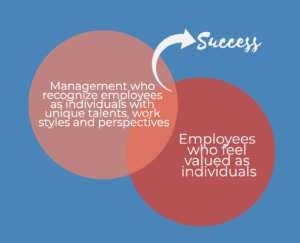Wong’s article is in a professional journal for those in the safety industry. Therefore, I thought the focus on the need for a review of safety protocols which include consideration of gender diversity was particularly powerful. She does a lot of work providing context, going into a lot of discussion about diversity in the workplace and what that’s meant in the past. She effectively acknowledges that many of her readers will likely be familiar with past diversity efforts, but won’t have really considered how they apply to their industry. Many of the uniforms, equipment, and fitness for duty tests were designed for men because the work was predominately being done by men. Wong stresses that as the gender diversity of the workforce increases, those uniforms, equipment and fitness for duty tests will need to change to meet that new reality. What might be safe for a man of average build may not be safe for a woman or person identifying as femme.
Throughout this first paragraph, Wong reuses the word “messages” to drive home her point. Some might have reached for their thesaurus, but in this case, the choice is quite deliberate. Wong is attempting to raise awareness of how not taking steps to address practices that may be considered exclusionary, that it’s sending a signal to those who feel excluded, and that signal is a reminder of their exclusion.
“On interpersonal and structural levels, such conditions communicate messages that people do not belong, that their needs are not recognized or deemed important enough to address, and that there is little interest in making things easier or more accessible for them to be successful. Such messages are at the core of most exclusionary practices. Continuously receiving these messages and having to navigate various obstacles can drain energy and take a significant toll on a person’s psychological, emotional and physical well-being, thereby reproducing yet another form of inequity with respect to how different workers are able to experience the workplace itself.
In the second paragraph, Wong provides a solution to the problem raised in the prior paragraph. She effectively summarizes the prior paragraph with two key words: “tension” and “burdens”.
Part of creating more inclusive workplaces involves addressing this tension. It is important to raise awareness among those with the privilege of not having to think twice about how they function so they can be more responsive to others’ needs and simultaneously alleviate burdens for those who must be extra conscious and aware to simply get by.”




